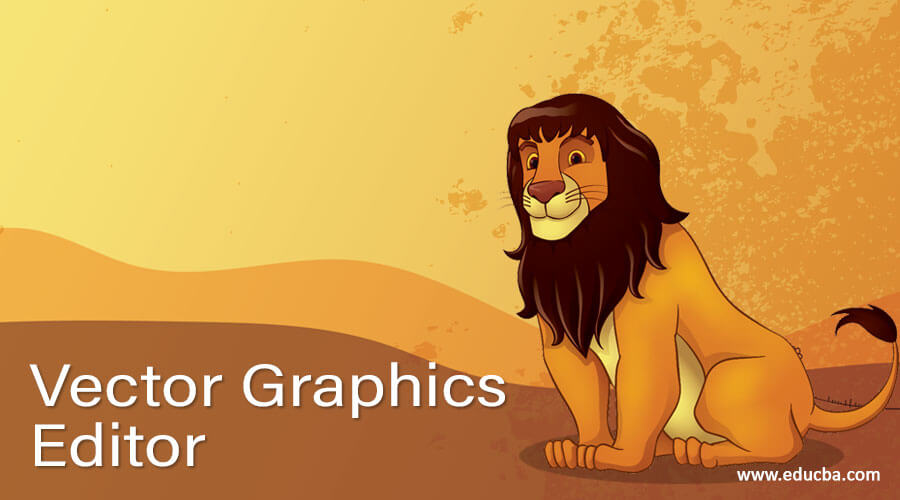
Introduction to Vector Graphics Editor
Photos can be viewed in computer graphics in two ways: vector graphs and raster graphics (or bitmap). The former describes the images, which are all based on mathematical calculations, as a set of pixels. The second uses roads, angles, arcs, curves, and forms and polygons to be used for the same purpose. Raster images are based on pixels and thus lose transparency and can forever be scaled on vector-based images without deterioration. In other words, resolution-independent vector graphics are able to stay of the highest degree of consistency.
Different Vector Graphics Editor
Let’s have a look at different Vector Graphics editors:
1. Inkscape
Inkscape, a vector graphics editor open source, is similar to Adobe Illustrator and CorelDRAW, but it uses an Open XML W3C standard, Scalable Vector Graphics (SVG), as the original format separates it from others. Inkscape supports various sophisticated SVG functions (clones, markers, alpha blending etc.) and a smooth GUI is designed very carefully. In Inkscape, editing nodes, full track operations, monitoring bitmaps, and much more are quite simple. Inkscape has a versatile GUI in the command line that can be used for a number of functions, including export and conversion of formats.
2. Xara Xtreme
This software is based on Xara Xtreme’s Windows graphical program (the quickest available graphic programs). Xara Xtreme is a versatile graphical program for general use including the following: Linux, Unix systems, FreeBSD, and (in development) Mac Os X. The new update is 0.7. Xara Xtreme is really sleek and easy to use for Linux. It includes some of the most powerful available graphics tools. Xara Xtreme has a limited learning curve and a vast selection of excellent graphics can be made. Getting a large amount of content for studying, videos, films, tips, and a highly engaged, passionate, and growing user group behind Xara Xtreme.
3. Skencil
In the GNU Lesser General Public License Skencil, formerly known as Sketch, is a freelance vector graphics editor. It is a versatile and efficient instrument for graphics, diagrams, and other uses, operating on GNU / Linux and other UNIX compatible systems. Skencil is somewhat rarely implemented in Python, a very high-ranking interpreted language. Python is strong, object-focused, and simple to use. The remaining software is stated in C. Version 0.6.17 of the app is available now. It has SPARC, i386, M68, DEC Alpha, PowerPC, as well as FreeBSD, Solaris, IRIX64 and AIX versions compatible with Linux. It is also supported by AIX.
4. VRR
VRR was begun in the University of Carlos, Prague, Czech Republic, as a student experiment in the Faculty of Math and Physics. It was successfully upheld in September 2005. However, in the spare time of the author, it is still being created. The VRR project aims to construct a vector image editor specifically designed (but not only) to illustrate mathematical papers. Its key features include a wide variety of geometrical artifacts and their stability, coordination with TeX, Scheme scripting, actual dimensions, and support for a wide range of file formats (including EPS, PS, PDF, and SVG). VRR 0.9.4 is the last update. The user’s manual is also available here for free.
5. ZeusDraw
ZeusDraw is the latest software for vector drawing, with a fast, elegant interface, broad brushes, and many other features. Mac OS X 10.4 or above is needed. ZeusDraw is a binary universal that can be executed with Intel or PowerPC. It is edition 1.3.1 as of now. Cocoa and Quartz let ZeusDraw teach you what you do. You see the object moving or spinning, not his bounding box, as you shift or rotate an object. ZeusDraw has a set of vector brushes (shaded, smooth, multi-hair) and it also has an entity brush to be drawn with either vector or bitmap bits. ZeusDraw makes Bézier curves smoother.
6. MagicTracer
MagicTracer is a Windows-based raster-to-vector converter. The raster and vector editing software are included. The assistance of image scanners requires MagicTracer. If you are an artist or building planner who needs to import scanned blueprints or drawings to your preferred CAD software or a sign maker who wants a vinyl cutter to transform picture files into forms, MagicTracer is for you. Three key tools for manipulating raster and vector information are available from MagicTracer: image, raster, and vector.
7. NodeBox
NodeBox is an application that can generate 2-d graphics using Python programming code (static, animated or interactive), and export them in PDF or Quicktime movies. NodeBox is well-documented and accessible. NodeBox can create forms like rectangles, ovals, stars, arrows, and general Bézier directions. It supports pictures (including PDF) and text (wrapped in line). NodeBox is a “status computer,” but people who have no programming experience can readily understand it.
8. Tplot (Win)
Turbo Plot is a freeware GUI application that generates features and data from 2-D or 3-D plots, whether Windows XP or later. TPLOT can save images as well as vectors like any drawing program. TPLOT can also save TPLXML files, which contain text files generated by text commands, in order to be readily loaded or modified manually. In the animated vector file format, TPLOT can save in SWF (Adobe Flash). You can make high-quality illustrated, unalienated graphics.
Conclusion
In this article, we have seen what is Vector graphics editing and Various software available in the market. You can choose any of them based on your requirements.
Recommended Articles
This is a guide to Vector Graphics Editor. Here we discuss the introduction and different types of vector graphics editor. You may also have a look at the following articles to learn more –

